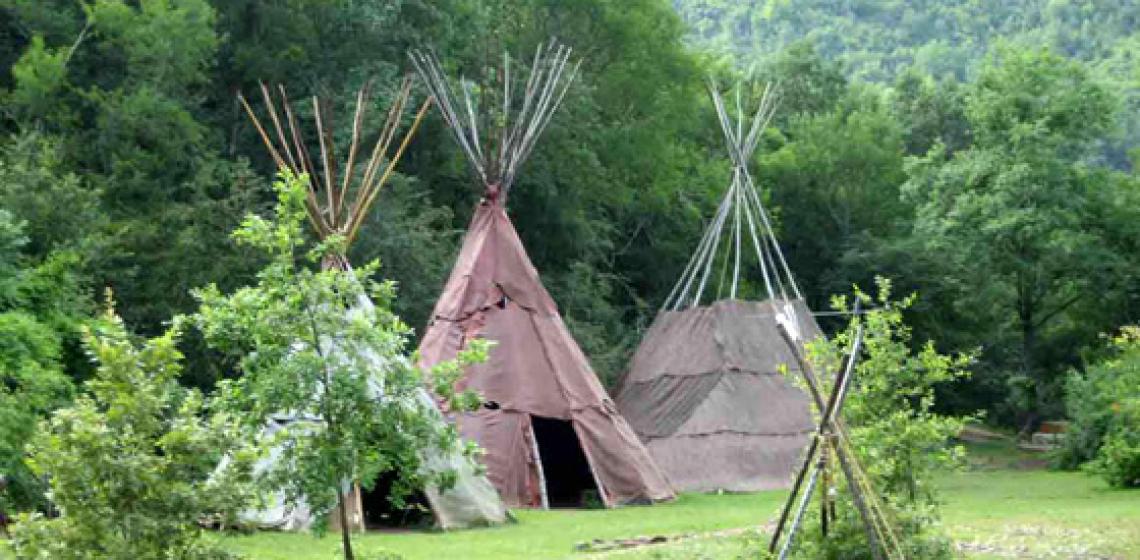Campement préhistorique de Bruniquel (FR)

At Bruniquel in a secret valley animations take place in the reconstruction of a Palaeolithic camp with various types of habitats in the wild in an area rich in archaeological deposits.
The association Terre Mère was founded in 2000 and was created to publish news of prehistory, the latest discoveries and draw parallels with our time in the context of environmental education.
Two formulas work in parallel:
- Mobile animations about the “Prehistoric Man Bruniquel”
- The Camp Prehistoric Bruniquel
There are mostly Schools and Leisure Centres visiting and the site is open to individuals throughout the summer on reservation. In 2006, 5,393 visitors attended the events. The association employs three employees in 2007 including a full-time and two three-quarter time. The association operates without subsidies. There are workshops offered in hunting, making fire, art and music. Visits to the nearby cave “grotte des Mayrières” with Palaeolithic paintings can be made, combined with the artificial excavation. This excavation simulates a Palaeolithic environment. After excavation, one has to identify the bones, flints, animal teeth ... and interpret the findings to reconstruct the history of our prehistoric ancestors on this site. Located at the prehistoric encampment, the excavation is covered and can allow 50 people to search simultaneously.
By exploring the lives of our ancestors, who was intimately tied to our mother planet, children participate in research knowledge relating to prehistory, archaeology, anthropology, ethnology, botany, zoology , palaeontology and other life science and earth. The research is powered by demonstrations, performances, events, debates, exhibitions and artistic creations in body language, music, and manual painting. The children mimic the ancient actions by making objects of everyday life, using natural materials and learn about the environment in areas of prehistoric occupation.
These animations are part of the promotion of education for the environment and sustainable economy. By leveraging what is known about the prehistoric cultures, which serve as models, children can be led to reflect on the problems of modern life and our relationship with nature.
Picture by Patricia Milan
